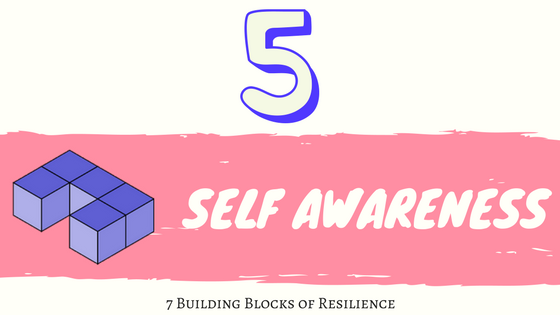How to Build Resilience using 7 Building Blocks
The words ‘resilience’ and ‘resilient’ came up during a conversation with friends recently. The trigger for this discussion was an acquaintance that had been through pretty rough times. Here’s what had happened: Sita made what many call a ‘miraculous’ recovery. After losing her husband and son (to cancer and a road accident respectively), and meeting with a major road accident herself, she spent many months in the hospital undergoing intensive treatment. However, despite the trauma – both physical and emotional, she surprised everyone by her recovery. She is not only back at work, but also keeps herself busy by organizing support groups and volunteering in her spare time.
You have probably met or heard of a person like Sita, who, despite all the odds stacked against them, has not just survived, but also thrived! It is inspiring and heart-warming to hear these stories of resilience.
When you cheer for the many protagonists in real life, as well as in books, movies etc. overcoming a variety of adversaries, have you ever wondered how you would cope in the face of such challenges?
Wouldn’t it be great if we could practice and get better at coping with adverse situations? If we could ‘bounce back’ stronger from hurdles and challenges?
What is resilience?
Resilience is the capacity to recover quickly from difficult situations. Masten and Obradovic describe it as “a broad conceptual umbrella, covering many concepts related to positive patterns of adaptation in the context of adversity." (Masten & Obradovic, 2006, p. 14).
Resilience is not the absence of vulnerability. Being resilient does not mean stress does not impact you; it means being able to overcome challenges and adapt to change.
How would you score yourself (out of 10) on resilience? Do you wish you were more resilient? You certainly can be!
Research indicates that resilience is not a static personality trait, but rather a dynamic process emerging from the interaction between personality traits and external stress (Luthar, 2006). In other words, resilience is not something that you either have or don’t. It is a skill that can be learned and improved.
Read on for seven practices that will help you to build resiliency:
1 Work towards Acceptance
The first step towards building resilience is acceptance of the situation. We often spend a lot of time in denial, which prevents us from moving forward. In her pioneering research on the way people process loss, Elizabeth Kübler-Ross called it the first stage of the ‘grief cycle’. Despite being a common (and maybe even necessary) reaction to loss, we cannot remain in this phase forever.
It can be quite challenging to acknowledge a loss or change. However, once you accept that it is real, you can start working on ways to cope with it. Acceptance does not mean that you pretend everything is OK. It means that you are honest with yourself that a change has happened and that it requires you to adapt.
2 Consider the bigger picture
Adopting a balanced approach gives you the opportunity to acknowledge the positive and negative aspects of the problem situation. This means that you accept and take ownership of positive and negative feelings and explore alternative viewpoints. Barbara Fredrickson, the author of Positivity (2009) says that resilient people are able to feel both positive and negative emotions simultaneously. Resilient people are able to see the silver lining to dark clouds. Rather than glossing over the negative or ignoring the difficult parts, this implies that despite the difficulties, you are able to broaden your perspective.
I often see clients who come with a very fixed view of their circumstances, leading to a feeling of hopelessness. They could be stuck on one part of the problem or one angle of looking at the situation and are unable to see the bigger picture. My work with them involves acknowledging the challenge of adopting a different perspective and practising empathy for themselves as well as the people around them.
3 Practice Empathy
Empathy or understanding another person’s feelings/perspectives has been linked to increased resilience. Empathy means cultivating a genuine curiosity about another person. This helps in building stronger bonds and in turn overcoming biases. Having a genuine desire to understand someone else’s feeling state helps you to move beyond preconceived notions. It gives you an opportunity to forge new solutions. People who have empathy are able to express their own feelings and communicate regarding how someone else is feeling too. They are more likely to resolve conflicts amicably.
4 Try Solution-focused thinking
If given a chance, many (if not most) of us can spend hours talking about everything that is not going right in our life. Trying to do the opposite needs deliberate effort. In order to build resilience, break out of the ruminating mode, and adopt a solution-focused approach. This approach calls for shifting the focus from the problem, to the search for a solution. Rather than being stuck on everything that’s going wrong, a solution-focused approach encourages you to find a way forward.
5 Nurture Self-Awareness
Self-awareness is a being conscious of your strengths, weaknesses, beliefs and reactions. By becoming aware of your strengths, you can identify areas you can improve on. Keeping in mind what is and isn’t within your control saves you a lot of stress and disappointment. People who are able to accept their limits and seek support from others are able to cope more effectively with challenges. Being aware of how your beliefs shape your reactions helps you to be better prepared to face challenges.
6 Build Connections
Another aspect of resilience is being able to reach out for support when you need it. Having reliable and supportive people in your life, who care and are willing to listen, plays an important role in many ways. Social support acts as a protective factor when faced with loss and counters the impact of stressful situations. Accepting support from friends and family who care contributes towards building resilience. When faced with loss or trauma, some people find it useful to connect with people who have had similar experiences.
7 Practice Self-care
Having a self-care routine is essential for maintaining and building resilience. This means listening and attending to your own needs. Among other things, daily habits such as regular sleep, physical exercise and balanced diet contribute towards increased resilience. A healthy body and mind are better equipped to cope with crisis situations.









